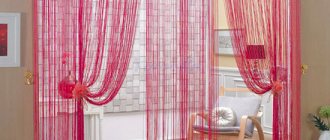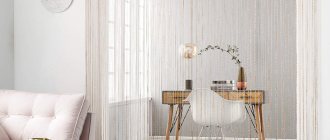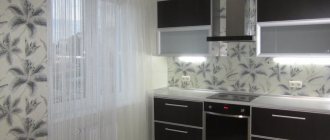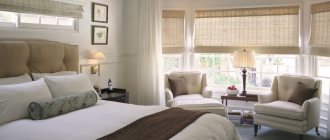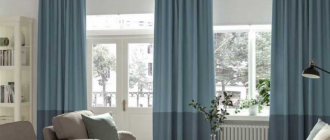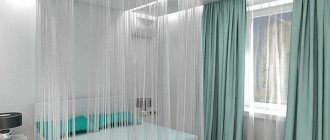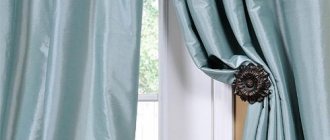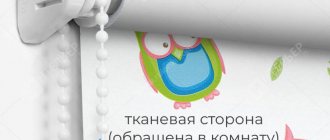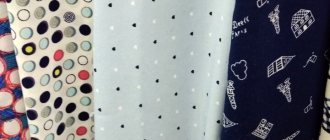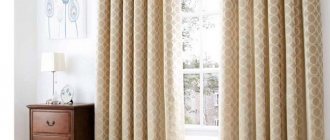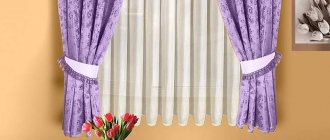Today, muslin is mainly called thread curtains. In the broadest sense of the word, “muslin” is a transparent fabric used for sewing curtains and elements of women’s toilets. It is distinguished by extreme lightness and excellent breathability. Mainly muslin is in demand in hot eastern countries. It allows you to diffuse bright sunlight without interfering with the free circulation of air.
The main differences from standard curtains
Ordinary curtains are created from a single piece of fabric, which is subsequently used to cover window openings and balcony doors. The material for curtains has different transmittance of natural light, which is determined by a specific choice, depending on individual preferences and stylistic ideas. An excellent choice is to purchase combined models that have varying degrees of transparency.
Photo gallery.
Modern thread curtains in the interior can not only decorate the window and provide the required level of daylight in the room, but also organically harmonize with almost any interior. Kiss curtains consist of individual threads on a fabric tape, which helps secure the product to the curtain rod. In terms of their structure, they do not have a textile fabric, and this is perhaps their main difference from ordinary curtains.
Curtains made of muslin provide good air circulation, which is important in the summer. At the same time, their functionality does not suffer, and caring for them is not difficult.
Due to this, they are used for zoning a room or as interior curtains, giving a special style to the space.
Story
Kiseya is of eastern origin. "Kasi" translated from Turkish means "cut matter". Kasi curtains and draperies have long been used in India, Turkey and other southern countries. They at least slightly muffled the scorching sun peeping through the windows. Horizontal strips of material swayed from the slightest draft and thereby helped fight the stuffiness. In addition, such curtains created a mysterious, unusual interior in the room.
“Kiseya” is a synonym for airiness, ephemerality, weightlessness.
In Russia they learned about muslin in the 18th - 19th centuries. The fabric was popularly called “razinka”. Mostly ladies' outfits were made from raspberries. Thanks to them, the popular expression “muslin young lady” appeared. The ladies, wrapped in airy, almost weightless muslin, looked incredibly fragile and dreamy.
Main varieties
Thread curtains can have different colors; there are no technical restrictions. Thus, there will be no problems with choosing the right color scheme that will be combined with other decorative elements.
Today you can purchase muslin curtains of various modifications:
- inlaid with beads;
- made in the same color;
- combined in various colors;
- with the addition of lurex, bugles or sequins;
- from rigid threads;
- considered popular are feather curtains.
All presented species create their own special mood and have a certain effect. Therefore, they can easily be considered a full-fledged component of the overall design idea. Moreover, the above models are organically combined with each other, so there is a pleasant opportunity to create a composition yourself with which to decorate your window opening.
Filament curtains are made from cotton fabric, synthetic materials, linen or bamboo. There are also non-standard solutions, for example, made of metal, which is cut into the thinnest strips. The production area of various models is quite extensive; they are manufactured both in China and in European countries.
Kiseya
There are different definitions of what muslin is. We decided to turn to the popular knowledge base on the Internet - Wikipedia.
Here is the definition she offers us:
Kiseya
(Turkish käsi - “cut material”, Kazakh kasa - “type of fabric”) - an extremely light, transparent cotton fabric of plain weave (cf. Gauze fabrics), in which the warp threads wrap around the weft threads in pairs, mutually crossing each other, then like wefts they lie separately and completely straight. It is intended mainly for ladies' toilets, but is also used for draperies, curtains, etc.
Curtains based on this fabric came to us from warm eastern countries. They are very common in these countries, due to the fact that they can be used to create shading in a room, but at the same time provide ventilation, which saves from the heat. Currently, muslin curtains are used in all countries, regardless of climate.
In our country, materials based on synthetic fibers are most widespread.
Threads with bugles or beads
Bugles are glass cylinders of various shapes and colors, with a hole for a thread. They were invented in France during the time of the kings and were used mainly for embroidering panels that decorated palaces.
At its core, bugles are a type of bead and they were developed much later. Beads are small glass objects with holes.
Beads have become widespread in various cultures and are small objects with holes. The material for beads can be very diverse. The most commonly used decorative stone.
The use of beads and beads for decorating threads is a great idea, which allows you to create very wide opportunities for implementing different room designs.
Bugles and beads can be hung both symmetrically and at different distances. Can be used on every thread, but can only be used on some. You can make such thread curtains yourself if you have certain needlework and sewing skills.
If there is no desire, then you can buy ready-made options in specialized stores, fortunately in our age of consumption there is no longer such a problem. It’s easiest, of course, for residents of the capital. Moscow has a large selection of stores, including huge supermarkets: Obi, Ikea, Castorama. But residents of small towns can significantly expand their choice thanks to online stores.
Rope curtains
Curtains made of thick fabrics are rope curtains. Thanks to their density, they create their own unique style. Very often used to divide a room into different zones or instead of interior doors.
Sometimes they are used with a special sliding mechanism. And therefore they look like vertical blinds.
Models
Today you can find various types of muslin curtains. When choosing, you should take into account the material from which they are made, as well as the texture and manufacturer. Often these are curtains made of silk, cotton and synthetics, plain or colored, made from materials of different textures. Main types:
- single-color, two-color and multi-color;
- spiral;
- in the form of noodles;
- with lurex;
- in the rain;
- tape;
- with solid inclusions in the form of glass, beads, wood, stones, ceramics and flowers, feathers and sequins;
- with textile decor;
- made of dense and hard materials.
Each type of muslin curtains deserves attention. As for manufacturers, products from Germany, India and China, as well as Turkey, Italy and Russia are famous for their quality. All products are made from different materials using different technologies, but are, in fact, the same production product, created according to the same principle. Kiss curtains are a surface made of dissected thin threads or strands, secured with a wide braid. The curtain fabric is made from synthetic and natural flowing materials.
In rare cases, muslin rope curtains are decorated with feathers, giving the surrounding space a special lightness and airiness. Bird feathers (most often chicken) can be variegated or plain, of various sizes and types. The most expensive options are represented by ostrich down. Kiss curtains with feathers on thin threads are also called blades of grass.
- Muslin spiral curtains look delicate. They are well suited to complement American country style, French country style, as well as interiors with an English theme. By adding lurex threads, you can give the spirals additional shine and highlight the Arabic style.
- Curtains with wide stripes are called “noodles”. They really resemble noodles, as they have a wide, dense surface. Such curtains protect well from light penetration, so they are often used as curtains.
- Kiss cascades in the form of millimeter threads with small inclusions of plastic, reminiscent of frozen raindrops, are one of the most beautiful options. Kisey-rain brings light notes of fusion style to the interior and gives a feeling of spring freshness.
- A curtain made of ribbons made of textiles and satin is a real work of art. Especially if it is embroidered with colored satin stitch or openwork lace, artificial flowers and various decorations in the form of pearl threads and sparkling metal stars. Such goods are exclusively individual in nature and are not used in mass production. But what a field for creativity!
- The many-sided glass beads are presented as decor in the form of transparent (usually plastic) elements of various sizes, shapes and sizes, with patterns and bubbles. It comes in colored, dyed or white. The flowing surface is characteristic of emphasizing the glamorous style and will look great in the boudoir and rooms of matured “princesses”.
- To decorate living rooms, halls and indoor spaces where there are practically no windows, an evening option is used - muslin curtains with golden cascades. In indoor lighting and surrounded by stained glass they look truly magical!
- Another interesting option is rainbow muslin. This is a surface made of threads dyed in different colors. From left to right, from top to bottom, diagonally - the varied assortment of these curtains contains all the colors of the rainbow, tones and halftones with smooth transitions and accents. They are decorated with fluffy pompoms and soft toys. This decor is often used in children's and playrooms.
- Printed curtains made of fabric butterflies, flowers and animals woven together are similar to tulle. However, it will not be possible to use them for zoning space, since they have a continuous surface. For this reason, they are often draped together with curtains. The decor looks advantageous on their dense base in the interior of the hall. By connecting threads of muslin fabric in different directions, you can create a real work of art.
Important advantages and minor disadvantages
All the main advantages of these curtains are revealed with constant use, so these products are quickly becoming popular in the modern market. A variety of thread curtains have an impressive list of advantages.
What is remarkable about muslin curtains:
- they do not need to be ironed after washing;
- can dry quickly directly on the cornice;
- the price range of such products has a sufficient range, so that almost every apartment owner can buy them;
- does not delay the access of heat emanating from the battery, as well as daylight and air;
- provide the ability to quickly place or remove various objects on the windowsill, which is especially convenient if it is wide. Open and close the window;
- do not have a large volume and will not collect a lot of dust;
- you can easily change their shape and length yourself;
- They are successfully combined with any material and are unpretentious in maintenance.
Kiss curtains have only one drawback - the threads can get tangled together in strong gusts of wind if the window is open.
It should also be noted that thread curtains using glass beads, beads and seed beads are not advisable to use in the interior of a children's room for very young children.
Production using unique technologies
When creating thread curtains, specialist designers use various materials. Ordinary thread curtains will cost an order of magnitude lower than products that use crystals or natural stones. Production is based on the production of a dense structure, which consists of lingering threads. Sometimes a strip of flexible polymer is taken as a base, and then combined with special threads, pre-treated with non-toxic substances to increase strength.
When adding muslin curtains with interesting decorative elements, experts do not always limit themselves to traditional items. The imagination and financial capabilities of some consumers allow them to create truly unique things that contain precious stones, as well as gold or silver threads. Models made from artificial thread will cost much less than curtains made from natural materials.
The main difference that is used in the design of such products is the replacement of the standard fabric familiar to the average person with fabric threads, sometimes with inserts of various decorative items. Thread curtains are produced in various lengths to suit any preferences and needs.
Short muslin curtains up to the window sill can be purchased to decorate a window opening in the kitchen. Or when there is a small window in the bathroom. This solution will turn out to be very practical and convenient. Longer designs are great for bedrooms or living rooms. Their big advantage is their light weight. They are quickly installed in the right place, without the need for much effort.
Non-standard solutions
Long thread curtains can play a big role in the design of an apartment, since they can be used not only for decorating a window or balcony door. Many stylistic ideas are related to the delimitation (zoning) of room space, where muslin curtains can be used as a screen, through which it will be easy to pass.
Instead of beads, various items can be used to decorate thread curtains, for example:
- rings;
- plates of various shapes;
- flowers;
- etc.
At the same time, muslin curtains can almost entirely consist of various objects, i.e. practically without threads. As a rule, this solution is used for doorways.
Compound
Kiss curtains are made from natural and artificial materials:
- cotton;
- flax;
- silks.
Perhaps the most common material is polyester. The curtain made from it is not electrified and does not get tangled. It has a pleasant shine, can be painted, and you can give it the desired shape yourself.
Mounting methods
Curtain tape
For this method, use a wide tape. The curtain tape is sewn onto the wide part of the muslin. Then hooks are inserted into special pockets on the tape. Using hooks, the muslin curtain is hung on the cornice. The solution is simple and effective. Using tape, folds are created on the muslin curtain. This way you can hang curtains beautifully.
Cornice rod
This is the simplest option, because... does not require additional work with curtains, provided that they were sewn correctly. For such hanging, it is enough to place the curtain rod between the thick fabric of the lining and the threads of the curtain. At the same time, there are certain options for placing curtains on a rod - you can stretch them along the entire length, or you can group them.
Velcro tape
This is also a simple mounting method. But it requires a special cornice on which the second part of the tape is attached. The main part is sewn to the thread curtain and should be attached to the cornice.
If there is no cornice, the second part of the tape can be attached to a wall, window or door slope. The absence of a cornice changes the interior of the room.
Eyelets
An interesting solution, but to implement it you need to install grommets on the muslin gasket. You can do this yourself, or buy ready-made curtains with installed eyelets. We will look at installing eyelets on curtains in another article.
Rings with clothespins
An easy way to hang curtains. This requires special rings with clothespins. They may come with curtain rods, but can be purchased separately.
What is muslin
Kisey is a weightless fabric with a special rare weave of threads originally from India. Most often made from a synthetic base.
This is a curtain made of a layer of threads: in the upper part they have a special weave, and at the bottom they hang freely. Outwardly they resemble a waterfall that flows freely down. The length of the curtains can be up to the floor or up to the window sill.
Tips for choosing muslin:
- decide in advance on the length and color;
- remember that synthetic materials are easier to maintain;
- decorations in the form of small parts are incompatible with a small child;
- A tighter closure can be achieved by hanging curtains in several rows.
To watch a video about fabric:
Where can I use it?
Kitchen
In the kitchen, thread curtains are often used as a door. If the apartment is a studio, i.e. the kitchen is combined with the room, then in this case the muslin can act as an element that visually divides the room into two zones.
Such curtains are used much less frequently on windows. Many are afraid to experiment, preferring more conservative options in the interior. Short curtains on the windows will look original. If desired, you can always shorten the thread curtains. It is interesting to use metal threads, or with metal beads.
Hall or living room
The hall or living room is the most common place for using thread curtains. The size of the room allows you to use different style solutions.
All types of thread curtains are used. The color is selected to match the interior of the room depending on the style of the owners or designer. Threads are used in various parts; on windows, on walls, for zoning individual parts.
Bedroom
Thread curtains are also in demand in the bedroom. In this case, they are often used to zone a room, as if dividing a private zone from a common one, or separating the space of a husband from his wife.
But thanks to its transparency and airiness, the room is not divided and remains one.
Useful articles:
- crocheted curtains - patterns;
- carved lambrequin;
- blinds - stress on which syllable.
Application area
Kisey in the interior is used in the living room, in the kitchen, in combination with thicker curtains in the bedroom and children's rooms. They also use muslin to divide a room into zones; they also hang it on the doorway. They are used to decorate niches and bay windows.
Kisey in the living room interior is most often used on windows. A combination of curtains of several colors (black, gray, beige, golden) can be effective. You can use plain muslin with bugles. Decorative elements due to glare will add airiness and lightness.
A combination of muslin with a translucent curtain will help make a classic interior less boring and official. Usually choose curtains of complementary shades.
Thread curtains can be completely straightened along the eaves and draped. For fastening, a special hairpin for muslin, tassels or magnets are suitable. For convenience, curtains can be braided or tied in knots. This will not only give the interior an unusual look, but will also prevent the threads from tangling.
Options for decorating living rooms with muslin can be seen in the photo below.
In the kitchen it is better to use curtains with a minimum of decorative elements. Since fat will settle on them, unlike threads.
Kisey in the kitchen can be simple, monochromatic or bright, combining several colors. If you want to make your kitchen design bright and unusual, use rainbow spiral muslin. Due to the unusual shape of the threads and colors, it will become a key accent in the room.
When placing muslin on the kitchen windows, make sure that when opening the doors of the wall cabinets they do not catch the curtains. This will cause the threads to become tangled or tangled.
Kisey rainbow of bright colors will fit perfectly into the interior of a nursery. You can hang it on the windows or make a bed canopy. You can also use thread panel curtains with various patterns. So a muslin butterfly would be suitable for a girl’s room.
You can divide a room into zones using classic plain thread curtains, as well as brighter and more unusual ones. Kisey spiral will create a denser canopy than a regular one. And the rainbow of muslin will be a bright accent.
Kisey made of beads is suitable for doorways, it will look good on the balcony. It unravels easier.
The muslin is attached to grommets or hooks or a special tape.
You can make muslin with your own hands from decorative braid or viscose yarn.
